At first glance, the idea sounds contradictory: desert plants in a rainy, often cloudy climate like the Pacific Northwest? But the truth is, some of the toughest desert natives are surprisingly adaptable—and with the right soil, drainage, and a little planning, they can thrive even in the region’s famously wet conditions.
The key lies in choosing desert-loving plants that are drought-tolerant but not water-sensitive, and giving them the kind of sharp-draining, lean soil they’re used to. While many desert species hate soggy roots, quite a few are more resilient than they get credit for. Some evolved in regions with seasonal monsoons, while others simply need smart placement and a well-prepped bed to survive.
This list features 22 stunning plants that bring the texture, structure, and boldness of the desert to your PNW landscape, without requiring a move to Arizona.
Agave Americana
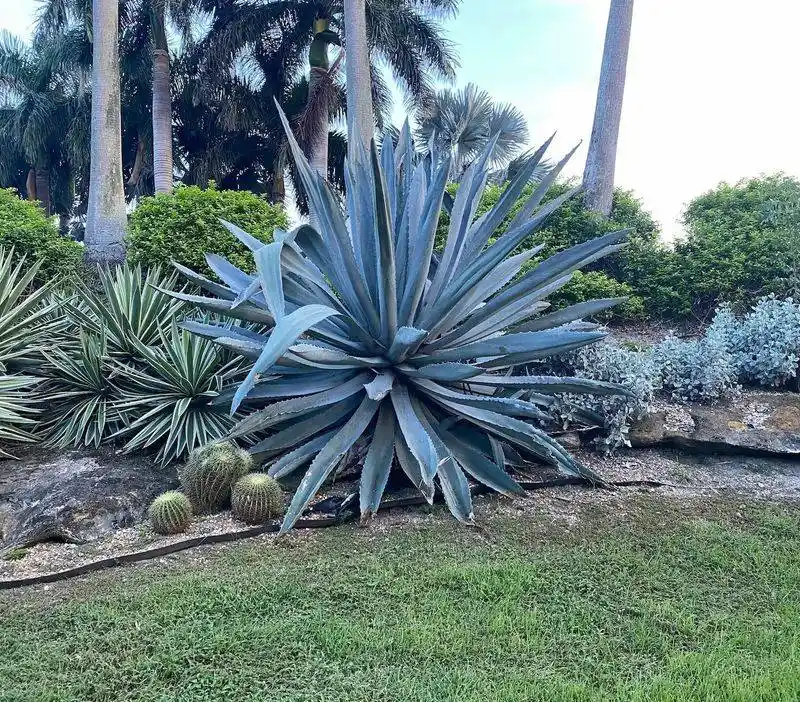
The Agave Americana stands out with its bold, architectural structure that commands attention in any garden. Known for its striking bluish-green leaves, this plant can thrive even amidst the drizzles of the Pacific Northwest. Its natural toughness and low-maintenance nature make it a favorite among gardeners who appreciate both beauty and practicality. During summer, its towering bloom spike can add a dramatic flair. It’s a great choice if you’re looking for a plant that can tolerate poor soil and occasional neglect while still offering a unique visual appeal.
Yucca Rostrata

Yucca Rostrata offers a visual spectacle with its rosette of sword-like leaves that seem to dance with every breeze. Originating from desert regions, it surprises many with its ability to adapt to wet conditions. The plant’s drought-resistant nature is complemented by its capability to handle the Pacific Northwest’s unpredictable weather. With a trunk that grows taller over time, it provides an exotic feel without overpowering nearby plants. This yucca’s fine, silvery strands along its leaves catch the light beautifully after rain, enhancing its decorative value.
Sedum ‘Autumn Joy’
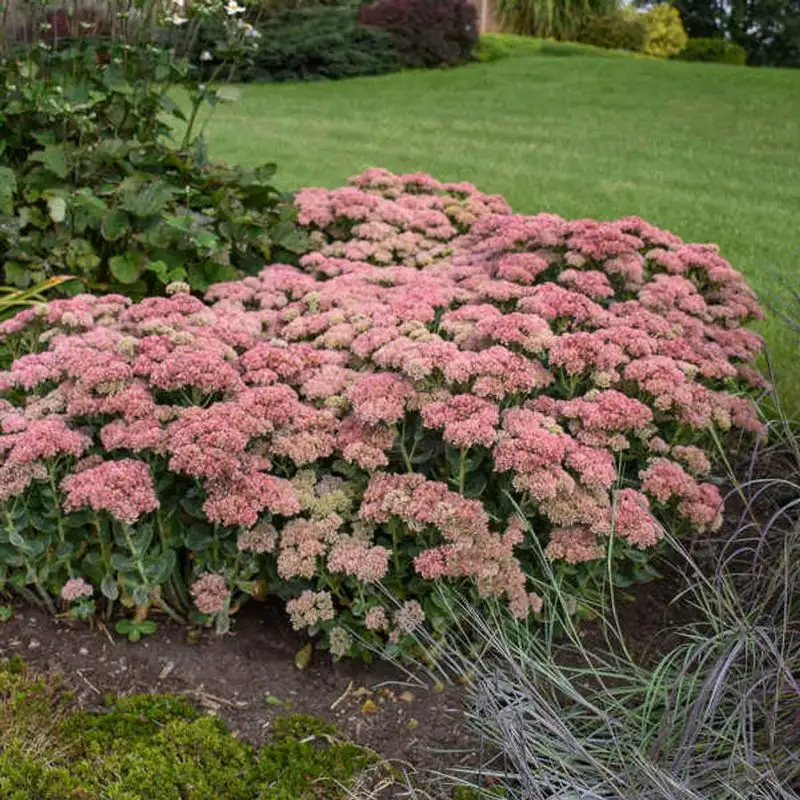
Neither purely desert nor strictly rain-loving, Sedum ‘Autumn Joy’ bridges the gap with its succulent leaves and vibrant flower heads. As the seasons shift, its blooms transition from a soft pink to a deep, rusty red, offering a changing palette that captivates throughout the year. The plant’s robust nature allows it to thrive in varied conditions, making it a valuable addition to Pacific Northwest gardens. It attracts pollinators, too, ensuring your garden not only looks stunning but also hums with life and activity.
Euphorbia Rigida
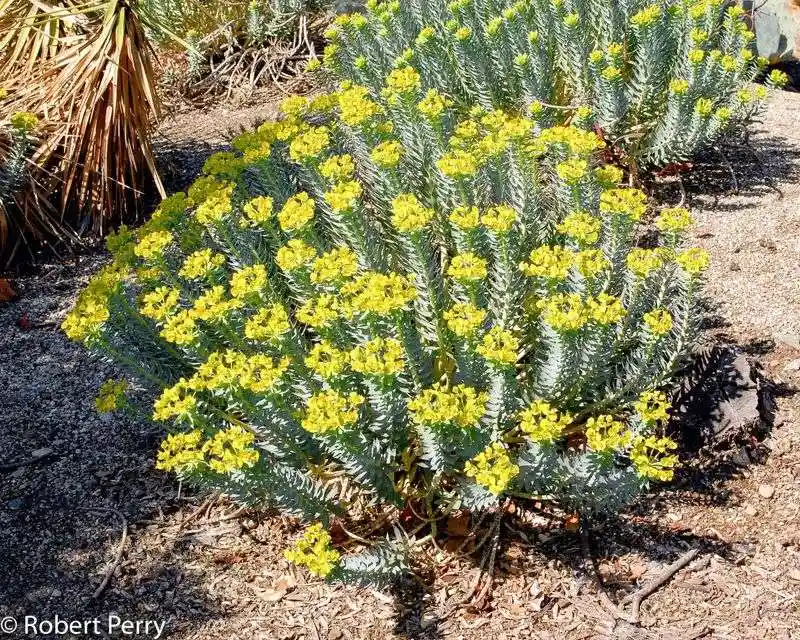
Euphorbia Rigida is a master of survival, showcasing resilience and beauty even in challenging climates. Its spiky foliage and bright yellow-green flowers provide a striking contrast against the typically muted hues of a rainy garden. Known for its adaptability, this plant can thrive with minimal care, requiring little more than occasional pruning to maintain its shape. Its milky sap deters pests, making it a practical choice for gardeners seeking low-maintenance beauty. With the added benefit of being deer-resistant, it’s ideal for more rural settings.
Red Yucca (Hesperaloe parviflora)

Red Yucca enchants with its slender, arching leaves and bold flower spikes that stand out against the damp backdrop. Known for its tolerance to drought, this hardy plant surprises with its ability to adapt to the rainy Pacific Northwest. Its coral-red flowers attract hummingbirds, bringing a delightful splash of wildlife into your garden oasis. This plant’s low maintenance requirements make it an excellent choice for those who want beauty without the fuss. Its evergreen nature ensures your garden remains vibrant even in the gloomiest months.
Prickly Pear Cactus (Opuntia)
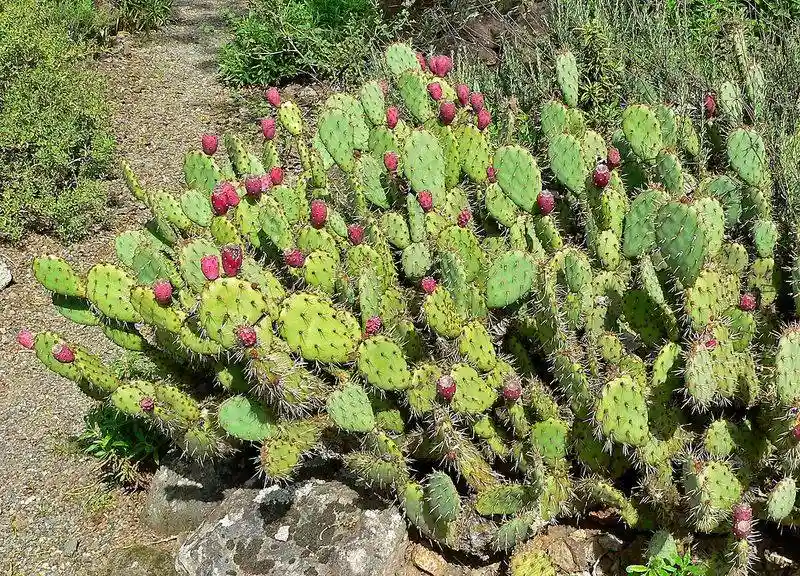
The Prickly Pear Cactus is a surprising addition to any garden, offering both aesthetic appeal and resilience. While its origin is the arid desert, this cactus has adapted well to wetter climates, making it suitable for the Pacific Northwest. Its unique paddle-shaped pads and bright, cheerful flowers bring a dynamic element to garden spaces. Not to mention, its ability to store water makes it incredibly low-maintenance. Whether you are a seasoned gardener or just beginning, this cactus offers an easy yet striking way to diversify your garden.
Lamb’s Ear (Stachys byzantina)

Lamb’s Ear captivates with its soft, silvery foliage that feels like velvet to the touch. Although it hails from drier regions, it shows remarkable adaptability to the wet climate of the Pacific Northwest. Its leaves form dense, low mounds that add texture and contrast to gardens, and during summer, it produces delightful purple flowers. This perennial is cherished for its ease of care, requiring little more than well-drained soil to flourish. It’s perfect for adding a tactile element that invites interaction and exploration.
Kangaroo Paw (Anigozanthos)

With its unique, claw-like flowers, Kangaroo Paw injects an element of whimsy into any garden. Hailing from Australia, it’s surprisingly well-suited to the Pacific Northwest’s rainier conditions. The vibrant blooms, ranging from yellow to deep red, attract pollinators and add a splash of color to the greyest of days. Its evergreen foliage adds year-round interest, and its adaptability to different soil types makes it a versatile choice. Easily maintained, it’s an enduring favorite for those who want to add some exotic flair to their space.
Russian Sage (Perovskia atriplicifolia)
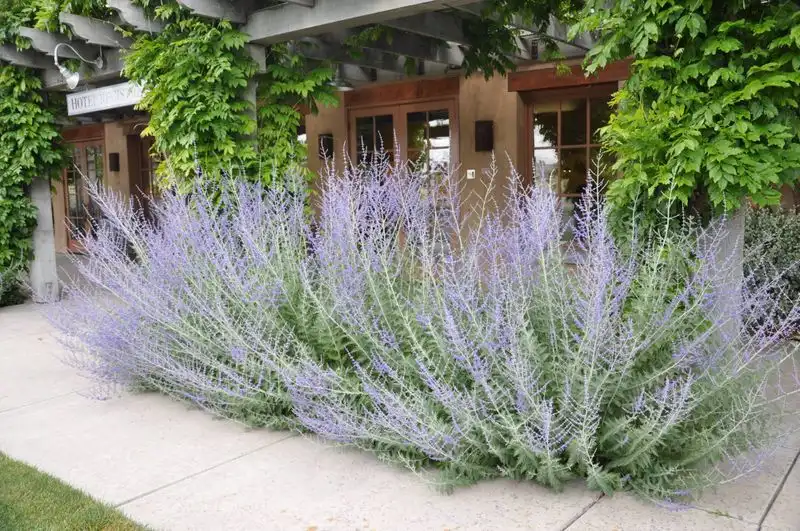
Russian Sage stands tall with its silvery stems and clusters of lavender-blue flowers that sway gracefully in the breeze. Originally adapted to desert climates, it handles the Pacific Northwest rains with ease. The plant’s aromatic leaves release a fragrant aroma when brushed against, offering a sensory delight. It thrives in well-drained soil, requiring minimal intervention once established. This sage not only brings a burst of color during the blooming season but also supports pollinators, making it a valuable asset to wildlife-friendly gardens.
Desert Marigold (Baileya multiradiata)
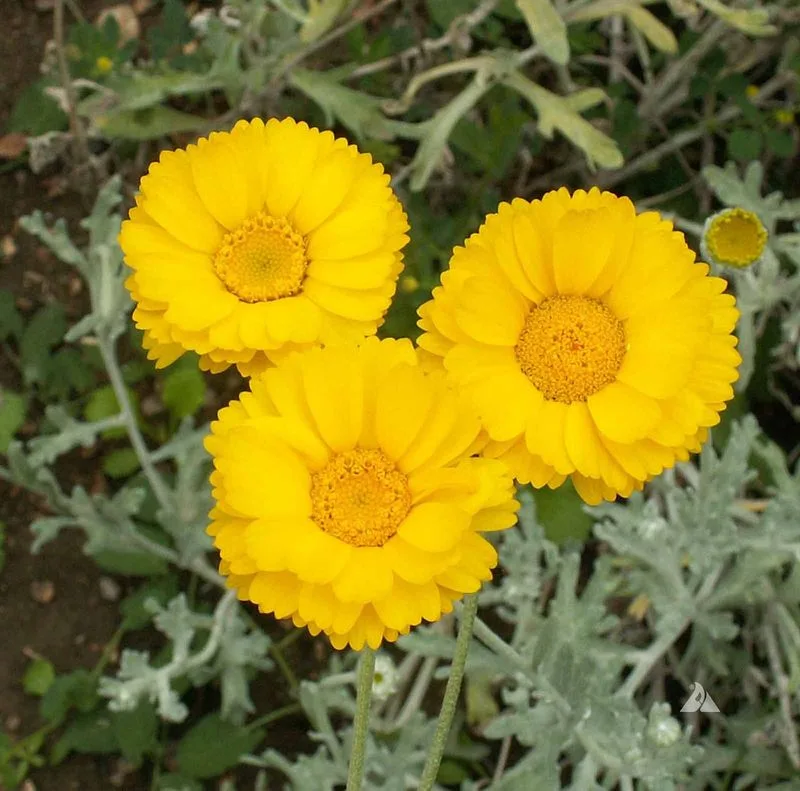
Desert Marigold dazzles with its cheerful, daisy-like blooms that persist through the growing season. Though native to the arid Southwest, its ability to adapt to wet conditions makes it a novel addition to Pacific Northwest gardens. Its bright yellow flowers shimmer against its silvery foliage, offering visual contrast and interest. Requiring little more than full sun and well-drained soil, this plant is both easy to grow and manage. A favorite among gardeners seeking to add color and resilience without the need for constant attention.
California Poppy (Eschscholzia californica)
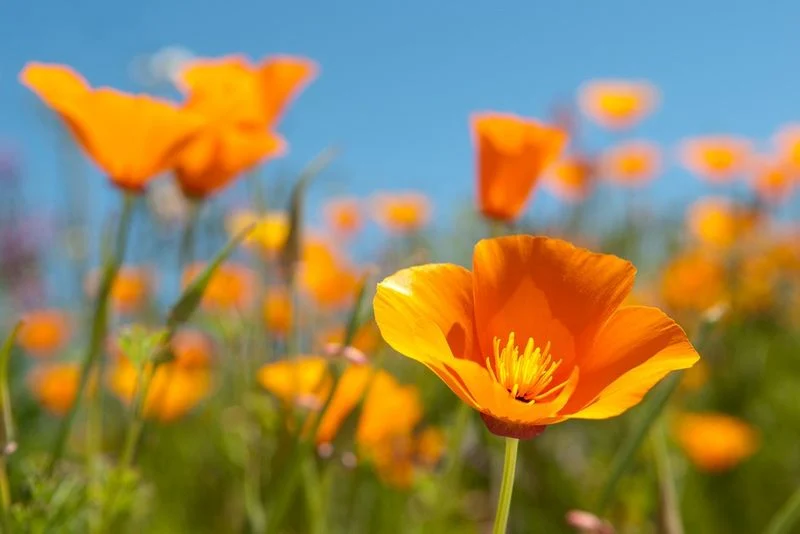
Bursting with vibrant orange petals, California Poppies are a brilliant choice for gardens that need a splash of color. This tough little plant, while native to California’s dry climate, is surprisingly tolerant of the wetter Pacific Northwest. Its delicate flowers open in the sun and close during cloudy weather, adding a dynamic element to your garden. These poppies are self-seeding, making them a low-maintenance option for those who want continual blooms. Plant them in clusters for a bold statement or scatter them for a naturalized look.
Ice Plant (Delosperma)
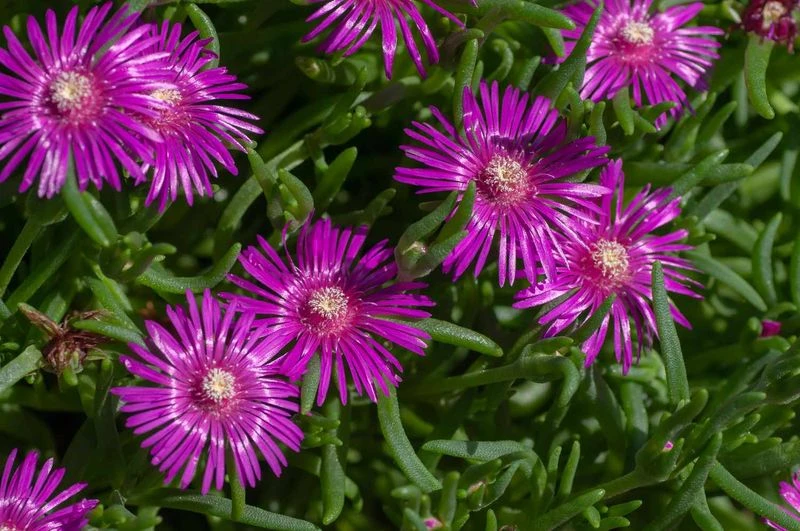
The Ice Plant is renowned for its vibrant, jewel-toned flowers that seem to sparkle under the sunlight. Originating from South Africa, it is well-versed in handling both sun and rain, making it perfect for the Pacific Northwest. Its succulent leaves retain water efficiently, reducing the need for frequent watering. Spread across rock gardens or edges, it creates a lush carpet of color. Known for its low maintenance, the Ice Plant is a fantastic choice for gardeners who desire beauty with minimal effort. It’s particularly stunning in full bloom.
Mexican Feather Grass (Nassella tenuissima)
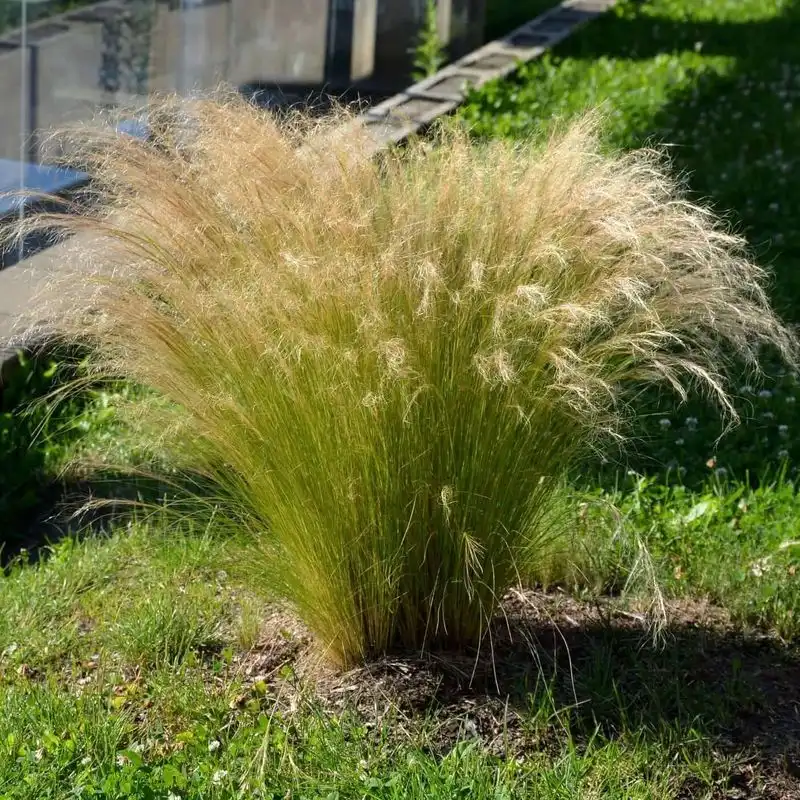
Mexican Feather Grass offers a soft, delicate appearance with its wispy, fine-textured blades that sway gently with the breeze. Despite its delicate look, it is quite hardy, thriving well in both dry and wet environments, including the Pacific Northwest. This grass adds movement and texture, playing well with other perennials and providing a gentle backdrop to more vibrant plants. It’s particularly effective in mass plantings or as an accent in garden beds. Minimal maintenance is needed, making it an attractive option for busy gardeners.
Jerusalem Sage (Phlomis fruticosa)
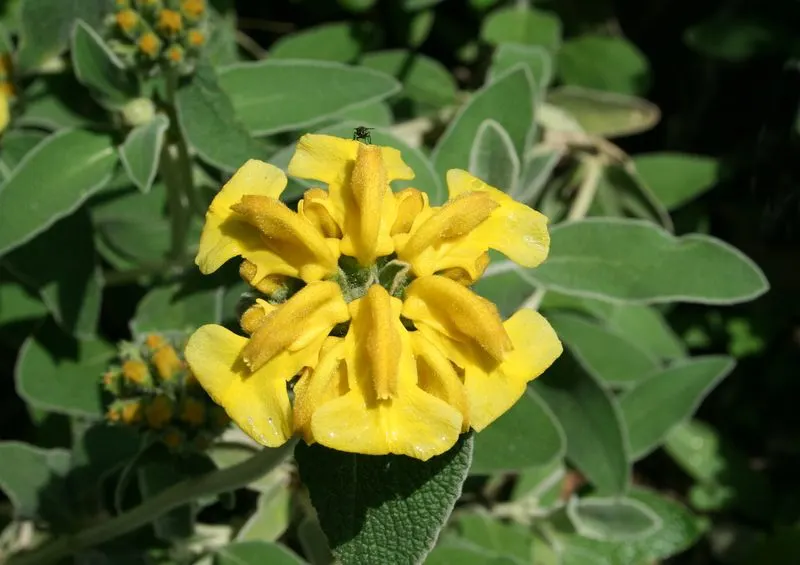
Jerusalem Sage captivates with its woolly, grey-green leaves and clusters of bright yellow flowers that resemble little suns. Originating from the Mediterranean, it has adapted well to both drought and rainy conditions, making it a versatile addition to the Pacific Northwest. Its aromatic foliage and long blooming period provide continuous interest and fragrance. This plant thrives in well-drained soil and full sun, requiring minimal intervention once established. Its unique appearance and hardiness make it a standout choice for diverse garden styles.
Cleveland Sage (Salvia clevelandii)
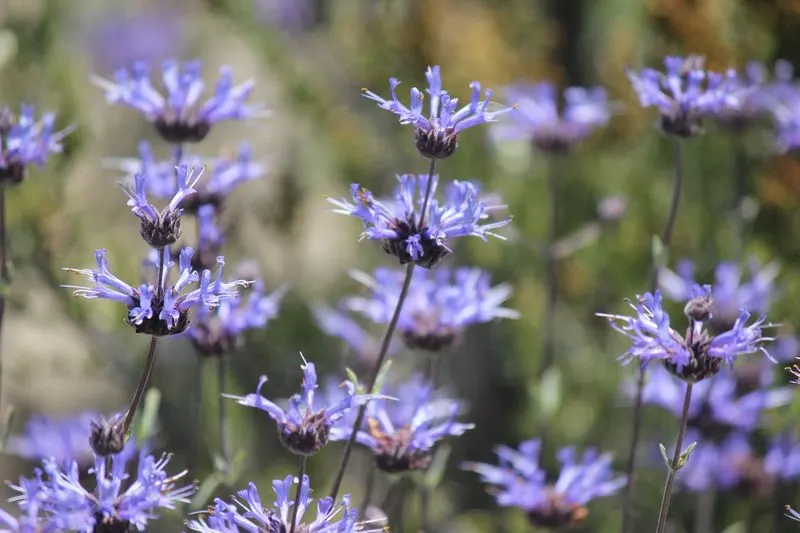
Cleveland Sage brings a touch of the desert with its aromatic foliage and lavender-blue flowers that attract pollinators. Adapted to thrive in arid environments, it also copes well with the damp climate of the Pacific Northwest. Its silver-grey leaves release a delightful fragrance, especially when brushed against or after rain. This sage requires well-drained soil and full sun, making it a low-maintenance choice for gardeners. Its drought tolerance and vibrant blooms add beauty and resilience to any landscape.
Pineleaf Penstemon (Penstemon pinifolius)
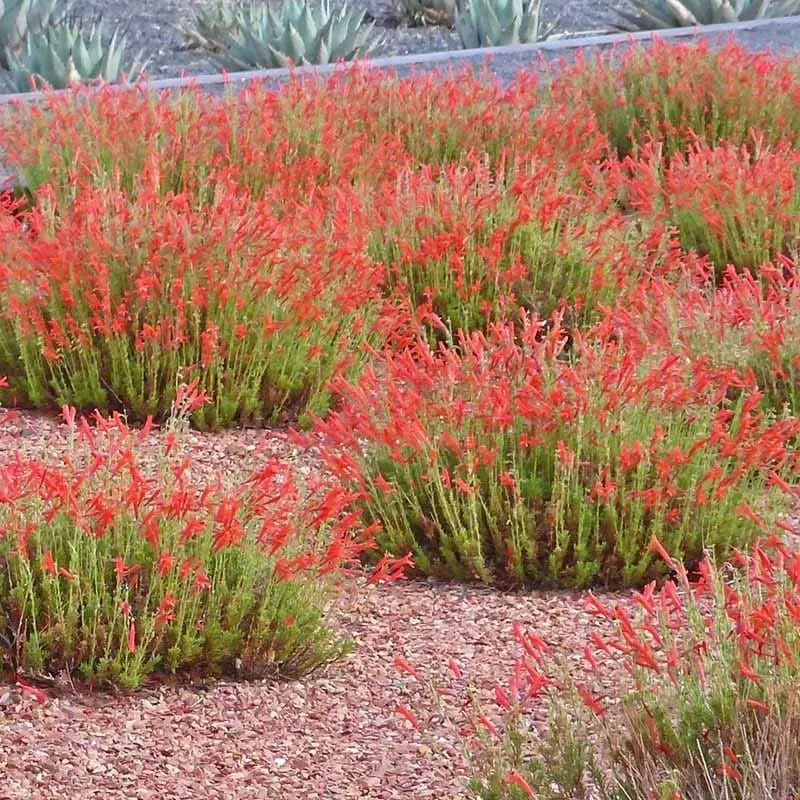
Pineleaf Penstemon enchants with its slender, needle-like foliage and vivid red-orange tubular flowers that attract hummingbirds. Native to the high desert, it surprisingly adapts to the Pacific Northwest’s moist conditions. The plant’s compact growth habit makes it perfect for borders or rock gardens, providing a splash of color throughout the summer months. Requiring minimal water once established, this penstemon is a favorite for those seeking low-maintenance, wildlife-friendly gardening solutions. Its unique texture adds an interesting contrast to traditional garden staples.
Blue Fescue (Festuca glauca)

Blue Fescue stands out with its cool, blue-toned foliage that forms neat, rounded mounds. Perfectly suited to the Pacific Northwest’s climate, this ornamental grass is both drought-tolerant and adaptable to wet conditions. Its fine, needle-like leaves offer a striking contrast to broader-leaved perennials, adding texture and interest to garden beds. It’s particularly effective when planted en masse or as an edging plant. Requiring little maintenance, Blue Fescue is a great choice for gardeners looking to add subtle color and form without the fuss.
Sunset Rock Rose (Cistus)
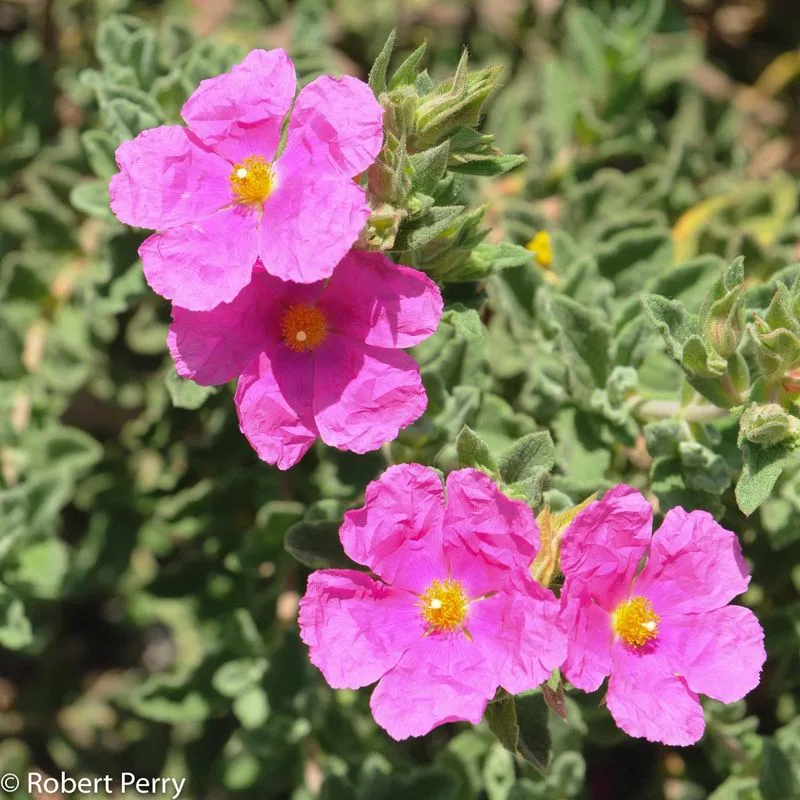
Sunset Rock Rose enchants gardeners with its delicate, paper-like flowers in shades of pink and white that bloom profusely. Known for thriving in dry, rocky environments, it also handles the Pacific Northwest’s rain with grace. This evergreen shrub provides a long blooming period, offering continuous color throughout the season. Its compact form makes it suitable for smaller spaces or as a low hedge. With minimal watering needs and resistance to pests, it’s an ideal plant for those who want beauty and resilience hand in hand.
Woolly Thyme (Thymus pseudolanuginosus)
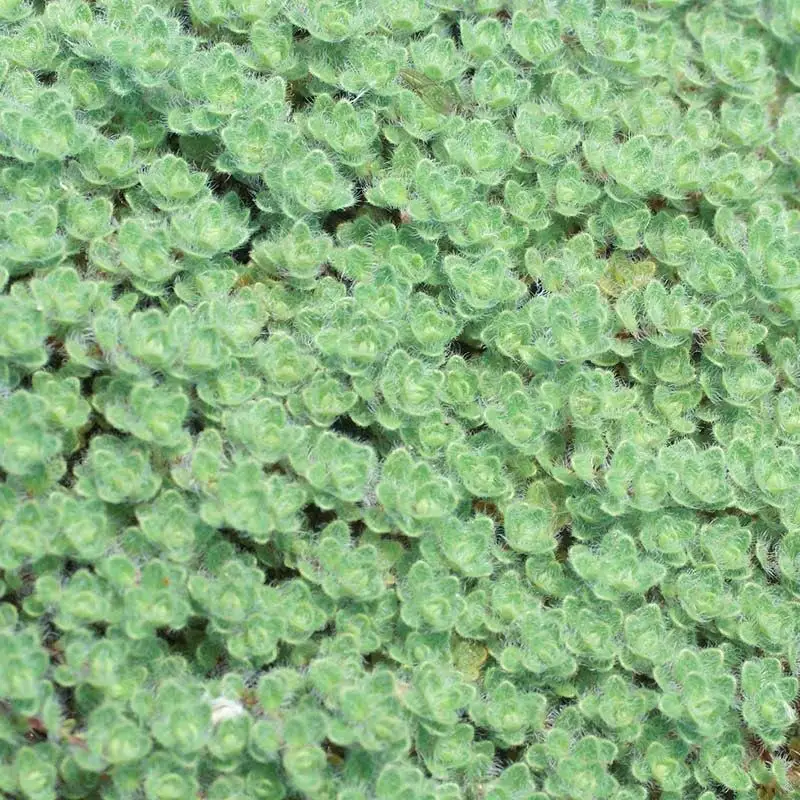
Woolly Thyme charms with its soft, fuzzy foliage that forms a dense mat, perfect for ground cover. Despite its Mediterranean origins, it adapts well to the Pacific Northwest’s wet climate. Its small, pink flowers add a touch of color in summer, and its aromatic leaves release a pleasant fragrance when walked on. This low-growing thyme requires well-draining soil and thrives in sunny spots, making it an easy-care option for those wanting to add texture and scent to their gardens. It’s perfect for planting between stepping stones or in rock gardens.
Agastache ‘Blue Fortune’
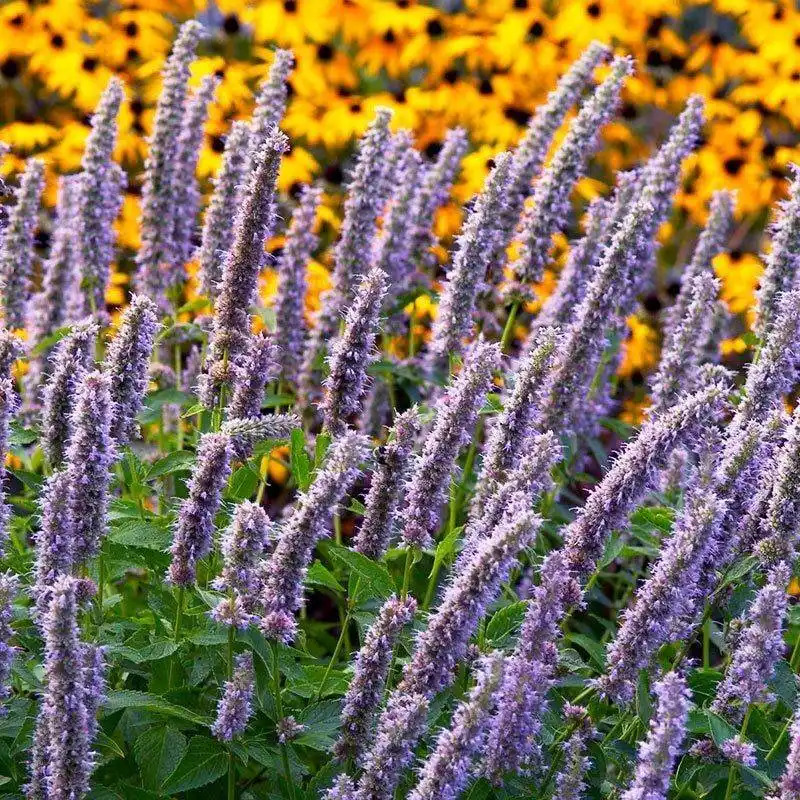
Agastache ‘Blue Fortune’ delights with its tall spikes of lavender-blue flowers that sway gently in the wind. A hybrid known for its hardiness, it thrives in the Pacific Northwest’s rainy conditions, providing structure and color throughout the summer. Its aromatic foliage attracts pollinators, offering a feast for bees and butterflies. Requiring well-drained soil and full sun, this plant is both beautiful and functional, adding height and a vertical element to garden borders. It’s a delightful choice for gardeners looking to support local wildlife.
Parry’s Agave (Agave parryi)
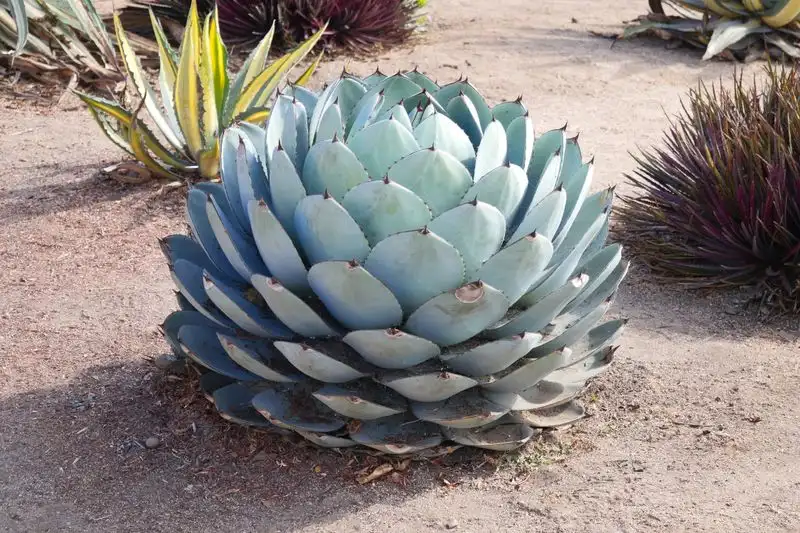
Parry’s Agave captivates with its symmetrical rosette of thick, blue-grey leaves that radiate outwards. Despite its desert origins, this agave withstands the Pacific Northwest’s rain, offering a bold architectural element to gardens. Its compact form makes it suitable for smaller spaces or container gardens. Once mature, it may produce a tall flower stalk, adding a dramatic flair. Low-maintenance and drought-tolerant, Parry’s Agave is perfect for those seeking a unique and durable plant that requires little care while delivering visual impact.
Lithops (Living Stones)
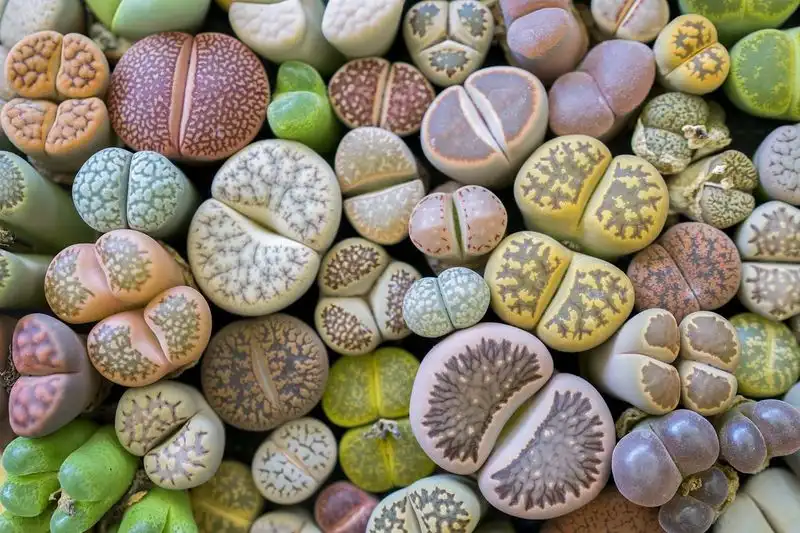
Meet Lithops, the quirky “living stones” that camouflage among rocks but thrive in unexpected places, like the rainy Pacific Northwest. Imagine small, rounded plants, each one mimicking the stones around it. These unique succulents can survive prolonged periods without water, making them both durable and whimsical.
Their knack for surviving with minimal water doesn’t mean they shy away from a bit of rain. Lithops have an uncanny ability to absorb moisture while staying rooted in well-drained soil. These charming oddities can transform your garden into an intriguing quarry.
Fun fact: Lithops bloom with daisy-like flowers, adding a surprise pop of color among their stone-like leaves. With Lithops, your garden gets a delightful conversation starter!

